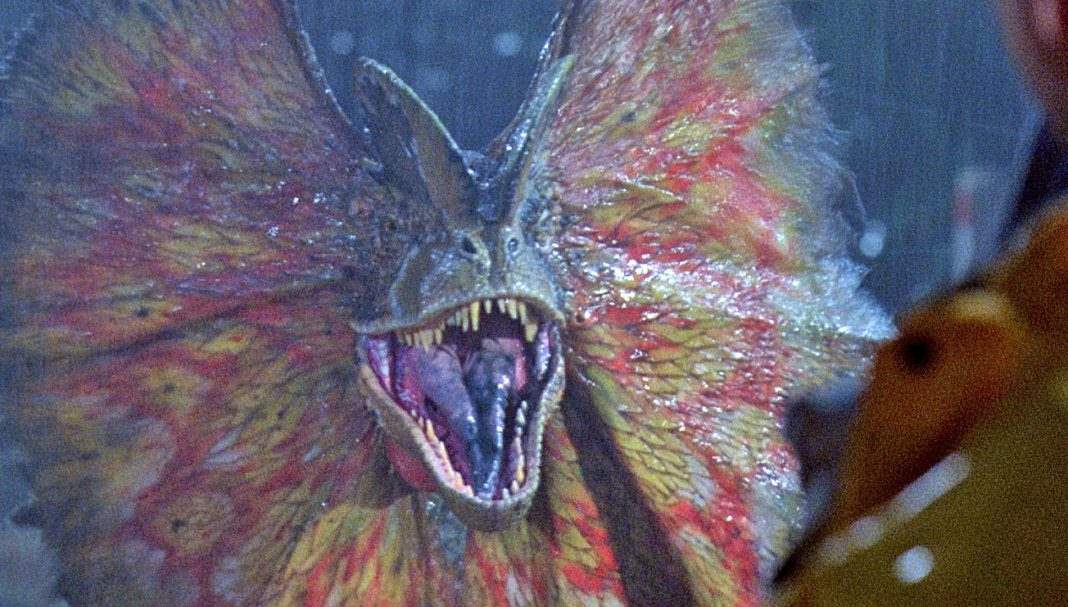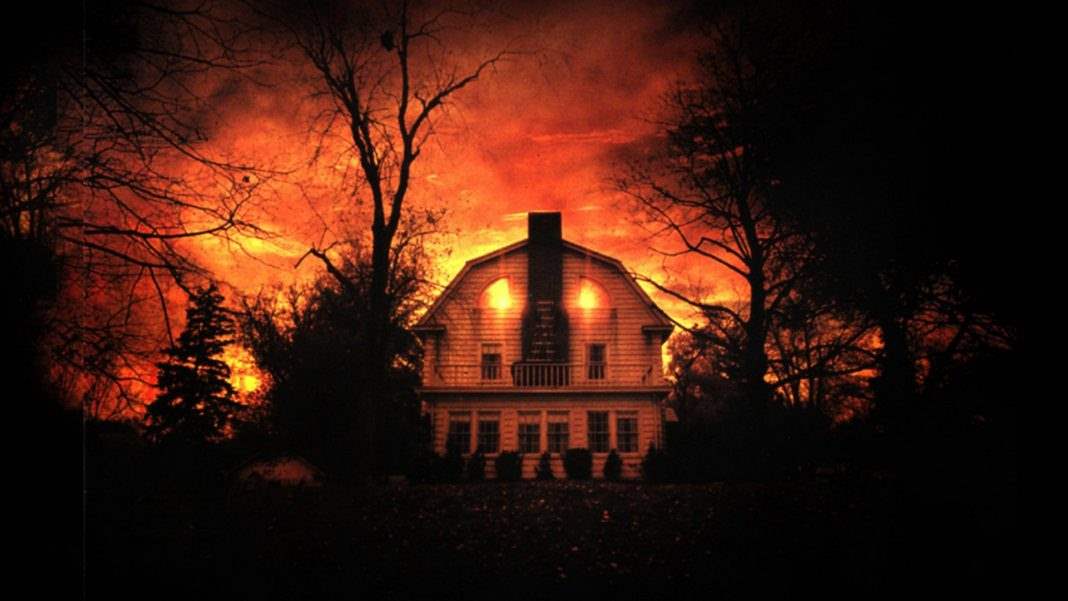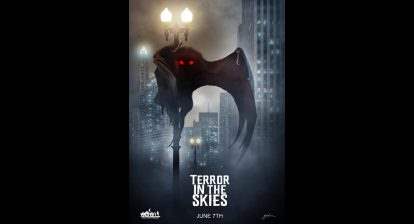It’s commonly accepted that dinosaurs went extinct around 67 million years ago. There have been some wildly different theories as to the reason of the extinction. Some speculate that diseases were to blame, an asteroid striking the Yucatan was also surely a contributing factor, and then there’s evolution – dinosaurs were distant ancestors of birds. Yet most of the animals or very close relatives that lived around the same time as the dinosaurs are still alive today. Not only fish, but many reptiles were alive during that time period and continue to thrive.
There are also animals like the Coelacanth that were supposed to have died out at the same time as the dinosaurs but were found alive and well in the twentieth century.
While nature runs its course as it always does, people continue to report encounters with real-life dinosaurs all over the world. It’s an area of study that cryptozoologists have been fascinated with for years. After all, there are still areas of the world left virtually unexplored. But the Earth is a strange place full of some incredibly strange creatures.
Are people really seeing dinosaurs, or could they be seeing something else? There are plenty of birds and reptiles with dinosaur-like traits. Even an elephant can look like a dinosaur from a distance. And these are almost undoubtedly what people are actually seeing.
Still, these reports continue to come in. What’s the explanation when people see a picture of a dinosaur taken out of a book and just assume it’s a drawing of the animal they’ve been seeing for years? It’s hard to tell and nearly impossible to know what these people are seeing with any kind of certainty. But the sightings don’t appear to be going away anytime soon. Here are some of the strangest.
Burronjor
The Burronjor comes from deep in the Australian outback. Sightings of it range from very recent to way back in aboriginal mythology. Descriptions of the animal vary, but most people report a creature similar to the Tyrannosaurus Rex, or possibly a smaller cousin like Allosaurus. Sightings of the animal usually report it as around twenty-five feet long, with small forearms and thick legs.
All reports show it walking upright. For decades, cattle ranchers have reported the animal coming onto their farms and feeding off of their livestock. Some cryptozoologists have theorized that the animal might be a Megalania—a prehistoric ancestor to the modern monitor lizard—but the many reports of dinosaur-like three-toed footprints don’t gel well with that.
From the more tropical regions of Africa come reports of the Kongamato, a cryptid thought to be a surviving Pterosaur—a Pteranodon or even something more bird-like, such as a Dimorphodon. The name Kongamato in English means “breaker of boats.” The animals supposedly overturn canoes and attack any who venture too close to the water. People have frequently reported being wounded by the animals, which could very well be nothing more than very large birds. In Frank Melland’s 1932 book In Witchbound Africa he reports a first-hand encounter with a Kongamato.

The Arica Monster
These reports come from Chile, South America and are fairly consistent with one another. General descriptions of the animal suggest that it is a surviving Dromeosaur—an all-inclusive name for members of the Raptor family. One interesting thing to note when considering the Arica Monster is that members of the dromeosaur family like Utahraptor did indeed live throughout Chile’s Atacama desert during the Cretaceous period.
There is a long stretch of road throughout the desert on which most sightings are reported. They all claim to have seen a six-foot dinosaur-like bird crossing the road. Many have reported three-toed footprints which are characteristics of a dinosaur and also a large bird. There’s also the fact that the desert doesn’t support too much life, so it could be an outright hoax. Plus, I’ve seen a six foot bird in Maine, and it just turned out to be someone’s Emu.

Mbielu-Mbielu-Mbielu
Like many of the animals on this list, these mysterious sightings come from the Republic of Congo. The name Mbielu-Mbielu-Mbielu in English translates to “the animal with planks growing out of its back” which in dinosaur terms sounds a lot like a Stegosaurus. That’s fairly similar to what the sightings describe as well, or at least a close cousin.
This cryptid is speculated to be semi-aquatic and thought to be herbivorous but that’s a hard claim to make as no physical evidence has ever been collected. Unlike some of the Congo’s dinosaur cryptids, this one has only ever been reported by the local villagers. But there is a Kenyan cryptid called the Muhuru that may be similar in appearance and has been glimpsed once or twice by outsiders. Still, without any kind of evidence it’s tough to make a claim on this one.

Mokele-Mbembe
Maybe the most famous of the dinosaurs spotted along the Congo, the Mokele-Mbembe is most often described as an Apatosaurus or similar sauropod dinosaur. The locals have been spotting this one for hundreds of years, there have even been a couple people who have claimed to have captured photographic evidence or video footage of the creature, though these were obviously far from conclusive.
The Mokele-Mbembe has even been covered on shows like Monster Quest and Destination Truth. Obviously neither of those programs came up with conclusive evidence or they would still be on the air. Some people have speculated that people who think they’re spotting this dinosaur are actually seeing a monitor lizard, which would make sense given its shape. But while a monitor is a large animal, it’s not anywhere the size of the massive creature that people keep reporting.

Ngoubou
The Ngoubou has been sighted around the savannas of the Cameroon. It’s reported as somewhere between the size of an elephant and an ox, with a large horned crest on its head and three horns on its face. This sounds similar to a Triceratops or some other member of the Ceratopsian family. It’s most often described as a Styracosaurus, although that animal only had one horn on its nose. The description would most closely fit that of a Chasmosaurus but there aren’t enough sightings or evidence of the animal to truly be sure. The locals who believe in the animal talk about it as though it is another species of rhinoceros.

Lau
Now here’s an interesting supposed creature. The Lau is supposed to be a large dinosaur with a body similar to that of a Tyrannosaurus Rex but with a couple major differences: this animal has fins on its tail and a squid-like face. How or why an animal would evolve like that, I have no idea. But people are seeing it. It has also been described as a donkey with flippers, but no one has ever reported seeing it without the weird, tentacled face.
Others have called it more hippopotamus-like or more snake-like. From that evidence, it’s a natural assumption that people are seeing completely different animals. Nonetheless, it’s fun to imagine some strange animal out there mush-mashing all of these wildly separate traits.

Lone Pine Mountain Devil
The Lone Pine Mountain Devil is one of the rare American dinosaur crpytids. It’s speculated as being some kind of West Coast cousin of the Jersey Devil. Often described as a winged demon, it’s reported to be some kind of large bird, around six feet, possibly a dromeosaur or a missing link between dinosaurs and birds. But people have also reported it as bat-like with red eyes so it’s really hard to get a handle on exactly what people are seeing when they claim to be seeing this creature.

Kasai Rex
Another reported animal from the Democratic Republic of Congo, this one is supposedly a surviving cousin of Tyrannosaurus Rex. There have been two pictures of Kasai Rex to circulate over the years. One was revealed to be a cut-out of a monitor lizard while the other was revealed to be a picture from the film The Valley of Gwangi with the creature cut out and pasted over a picture of a rhino. While reports have never quite ceased, the amount of hoax work that has gone into this animal does not look good.
One of the best sightings was reported by a John Johanson in 1932, where he claimed to see a reddish creature with black colored stripes that had a long snout filled with teeth. He also described the creature as being “built for speed.” One interesting thing about this report, though, is that it adheres to scientific theories about the Tyrannosaurus that would not be discovered until years later. Whether that’s sheer coincidence or not, it’s intriguing.

Partridge Creek Beast
Of all the possible dinosaur sightings on this list, this is one of the weirdest. It even gives the Lau a run for its money. This animal is reported as a Ceratosaurus, which was a large theropod dinosaur similar to Tyrannosaurus but with a large horn on its nose. Fairly standard dinosaur stuff, except for the fact that all of these sightings come from the Yukon.
In particular, the Partridge Creek area. The creature is supposedly 50 feet in length, with dark black fur and is known to feed on caribou. Footprints that have been found for this animal were measured around five feet long. Two of the best sightings of it are not exactly recent, both coming from the first decade of the twentieth century. One was in 1903 and the other in 1907, but they reported virtually identical animals. It’s hard to tell what people are seeing out there, if anything at all, but the idea of a furry, snow-dwelling Ceratosaur is certainly fun to think about.







